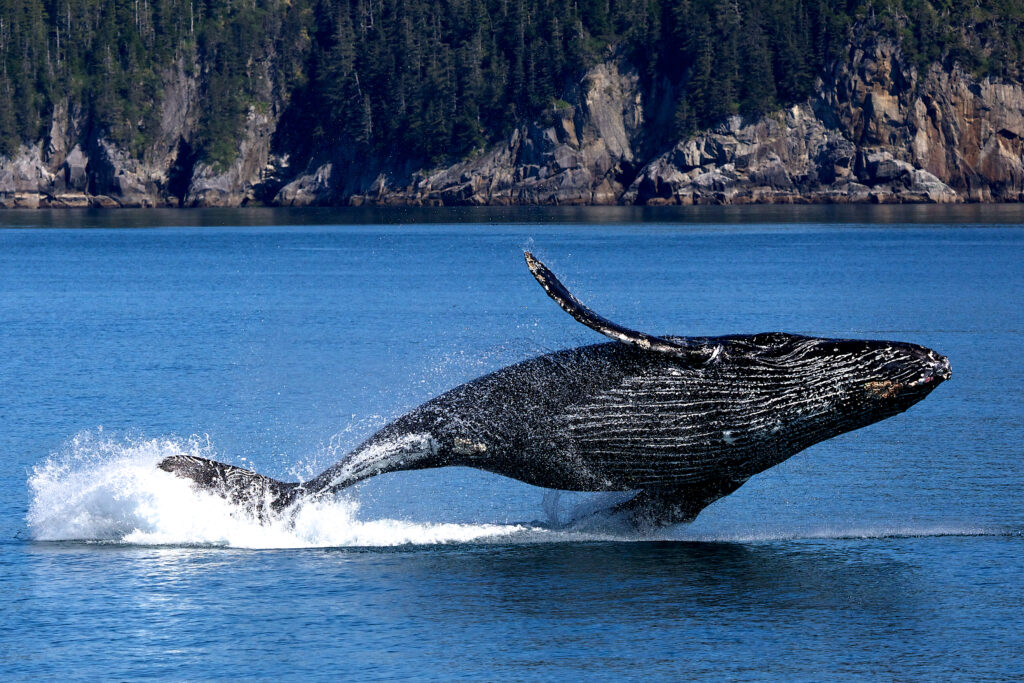
Qaiyaan Harcharek was hunting for bowhead whales in the spring of 2007 when he first saw a humpback whale in the waters off Utqiagivik, his hometown and the nation’s farthest north community.
He and his fellow hunters had been “boating and boating and boating for days,” heading toward the site where a whale was spouting from its blowhole, when they encountered the humpback in the Beaufort Sea, well north of where that species usually swims.
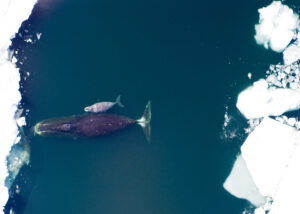
“It should have been a bowhead because that’s all that’s ever up there that time of year,” Harcharek said
That is no longer the case. Humpback whales, better known in the waters between the tropics and the Bering Sea, are now commonly spotted in Alaska’s Arctic waters.
A recently published study co-authored by Harcharek reviews the multitude of sightings since his 2007 encounter, and it shows how they have increased exponentially.
Aerial surveys conducted form 2009 to 2019 by the National Oceanic and Atmospheric Administration’s Alaska Fisheries Science Center tallied 150 sightings of 220 humpback whales in the Arctic waters, with twice as many sightings between 2017 and 2019 as in the three years prior.
Most of the humpbacks were seen between about 67 and 68 degrees north latitude, which is slightly north of Kotzebue, according to the data. It appears that there is some sort of feeding hotspot near the Inupiat village of Point Hope that is drawing large numbers of humpback whales, said lead author Kate Stafford of Oregon State University’s Marine Mammal Institute.
Farther north, where Harcharek’s 2007 encounter with a humpback was one of the first ever reported in the waters off Utqiagvik, the total sightings have not been as numerous, but there has been a similar increase in recent years. Data collected by the North Slope Borough’s Department of Wildlife Management shows that from 2020 to 2022 there were six nearshore sightings of humpback whales in the far-north waters, some with multiple animals, according to the study. In one single event in 2022, 10 humpback whales were seen breaching and slapping their pectoral fins on the water.
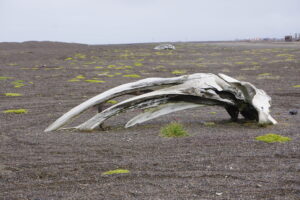
Harcharek, who said he sees a humpback whale “darn near every time I go boating,” has mixed feelings about the new arrivals.
“It’s fascinating to see new species. However, we don’t know what impact that is going to have on the whales that we live off of,” he said. “It’s fascinating. It’s interesting. It’s also a little terrifying because we rely on the bowhead for so much.”
The catalyst for the study, Stafford said, was a 2021 boat survey with the late Craig George, the renowned whale biologist who worked for decades at the North Slope Borough’s wildlife department. They were watching a whale feeding in the Beaufort Sea that they assumed was a bowhead. Looking closer, she said, they saw the distinctive fin of a humpback whale.
That led them to a search of records kept by the borough and to consultations with Inupiat residents. People were eager to share their knowledge with George, Stafford said.
“Of course, Craig was the go-to person when people saw something interesting,” she said. “Because people trusted him with their information and observations and because he would listen to them with respect and with consideration, people went to him.”
Bowhead whales, with their thick bow-shaped skulls that can break through ice, have evolved to thrive in the Arctic. Inupiat hunting tradition targets bowheads and belugas, another Arctic-dwelling species.
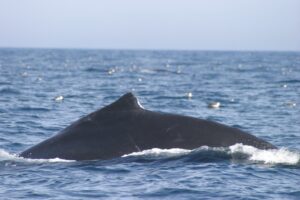
In contrast, Alaska’s humpback whales spend part of their lives in the warm climates, wintering in Hawaii, Mexico or the waters off Japan and the Philippines.
There are five population groups of North Pacific humpback whales, three of which summer in Alaska waters. They are commonly seen in Southeast or Southcentral Alaska and the Bering Sea. They were known to occasionally range as far north as the southern Chukchi Sea, above the Bering Strait, but those appearances were considered rare – until now.
The new study, published in the journal Marine Mammal Science, shows how that range has expanded farther north still.
A possible explanation for the expansion, the study said, is climate change. Long-term warming has reduced Arctic sea ice, not only in the summer melt season but, as the past year’s record shows, throughout the year.
If lack of sea ice is a factor, humpback whales are not the only species taking advantage to expand northward. Previous studies have shown how killer whales are increasingly present in Arctic waters used by bowheads. One of those studies, led by George and published in 2017, tracked trends for wounds in the bodies of harvested bowheads and found increasing incidence of killer whale bite marks; a related study, published in 2020, provided direct evidence of killer whales preying on Arctic bowhead.
Another factor that might be at play, also related to climate change, may be warmth-driven changes in the food web that created more favorable foraging conditions for humpback whales, Stafford said.
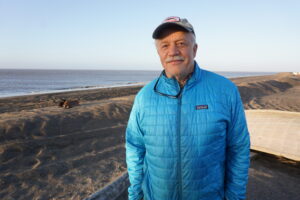
Another possible explanation is the steady increase in the North Pacific humpback population, she said.
Humpbacks have thrived sufficiently in recent years that some are no longer considered members of an endangered or threatened species. Previously, all humpback whales worldwide were listed as endangered, but in 2016 NOAA Fisheries identified 14 “distinct population segments” and determined that Endangered Species Act protections were no longer warranted for most of those.
Of the three distinct population segments that swim in Alaska waters, one is classified as endangered, one as threatened and one, which winters in Hawaii, no longer has any Endangered Species Act listing.
George died in July in a rafting accident near Denali National Park and Preserve. The newly published study may not be the last to bear his name as an author due to his work before his death, Harcharek said.
“Honestly, I would not be surprised if there’s other work. Although he was retired, he was never going to be retired completely,” he said.
George’s death hit Utqiagvik hard, Harcharek said. “I’ve known him my whole life,” he said. “I’m sad. It sucks right now. We just lost an encyclopedia of knowledge of whales and ecosystems. That’s aside from just the amazing person he was.”
Alaska Beacon is part of States Newsroom, a network of news bureaus supported by grants and a coalition of donors as a 501c(3) public charity. Alaska Beacon maintains editorial independence. Contact Editor Andrew Kitchenman for questions: info@alaskabeacon.com. Follow Alaska Beacon on Facebook and Twitter.




